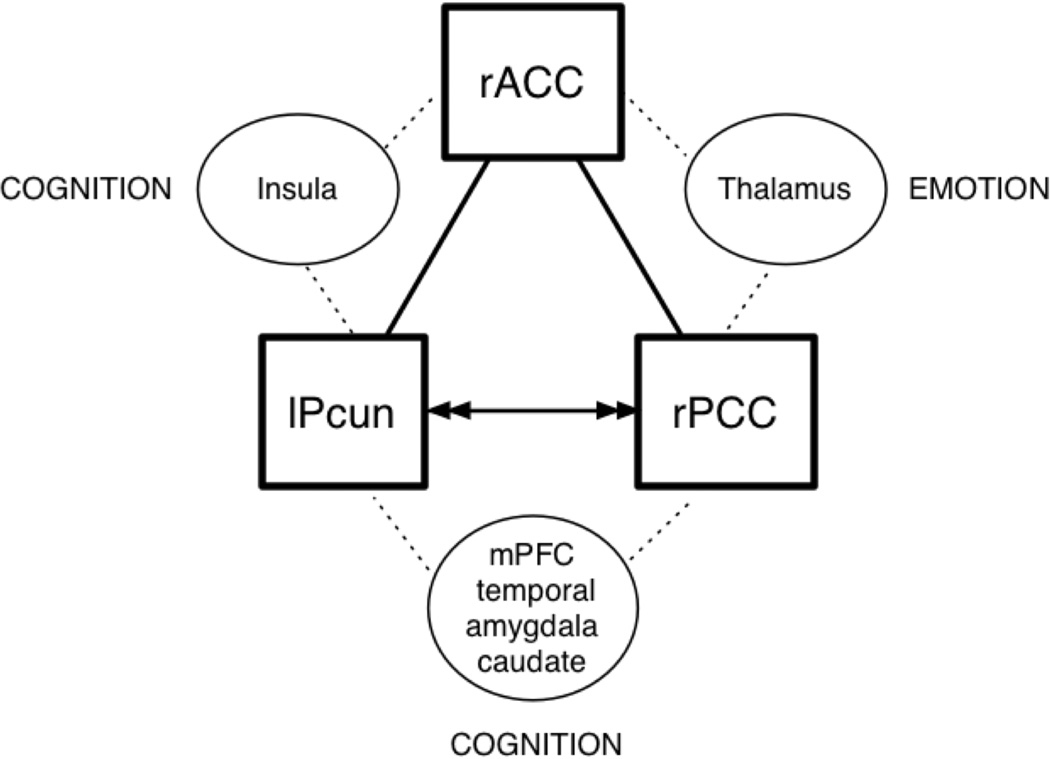Figure 2.
MACM indicated that (1) the three PTSD ROIs are functionally connected (lines), (2) inter-connectivity with other regions (circles) suggests that the ROIs (squares) connectivity is mediated by those other regions (dashed lines), and (3) are behaviorally separable when co-active within the same experiments (behavioral domains). The co-activation of PCC:Pcun (co-active in n=39 experiments in BrainMap) is associated with Cognition and more specifically to social cognition, explicit memory and interoception with particular engagement during tasks of episodic recall, theory of mind, subjective emotional picture discrimination or face monitor/discrimination. Seed to target MACM indicated reciprocal connectivity between the PCC:Pcun (i.e., activity in one region predicts activity of the other, arrows). Further, when the PCC:Pcun are co-active, there also is co-activity in medial prefrontal cortex (mPFC), medial and lateral temporal regions, and the caudate nucleus (S-Table 3). Co-activation of ACC:Pcun (n=10) is associated with Cognition and particularly co-active during explicit memory tasks during which the right insula is also co-active. The only connection explicitly related to emotional processing was that of the PCC:ACC (n=14) and their connection is mediated by the thalamus.

